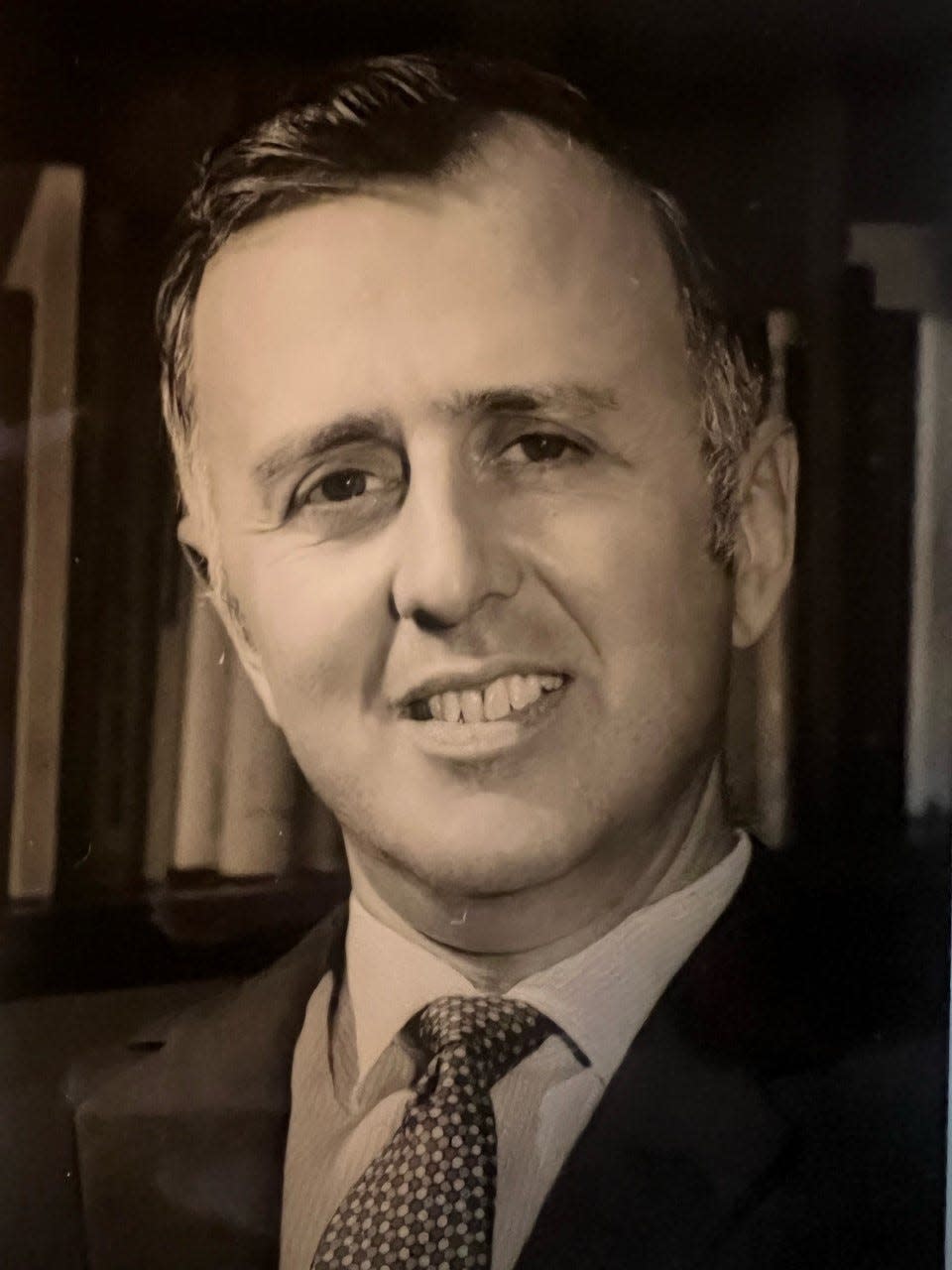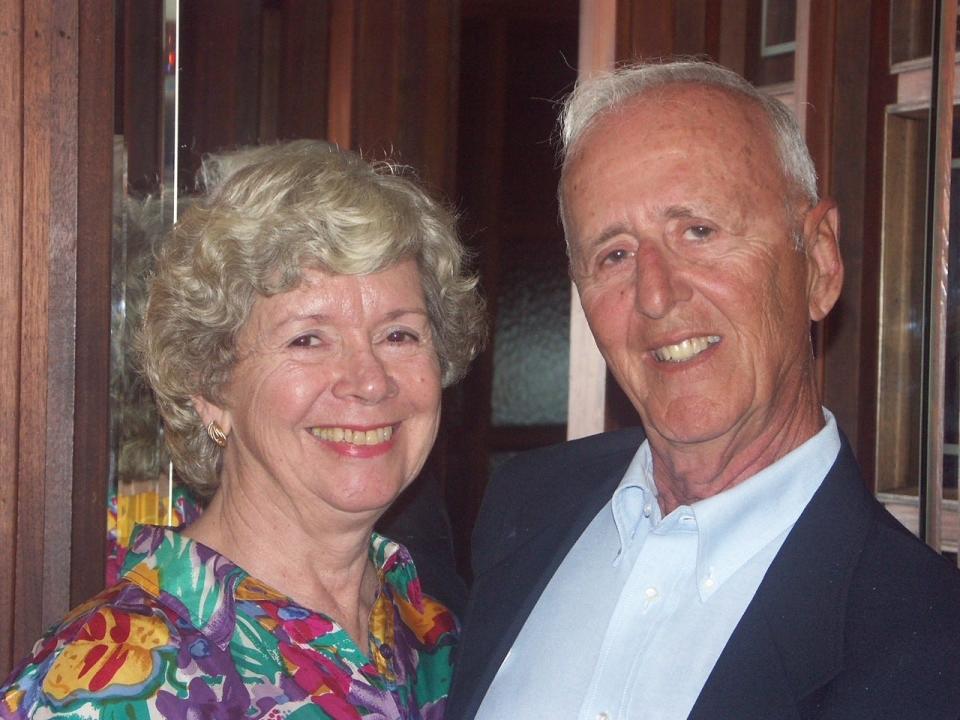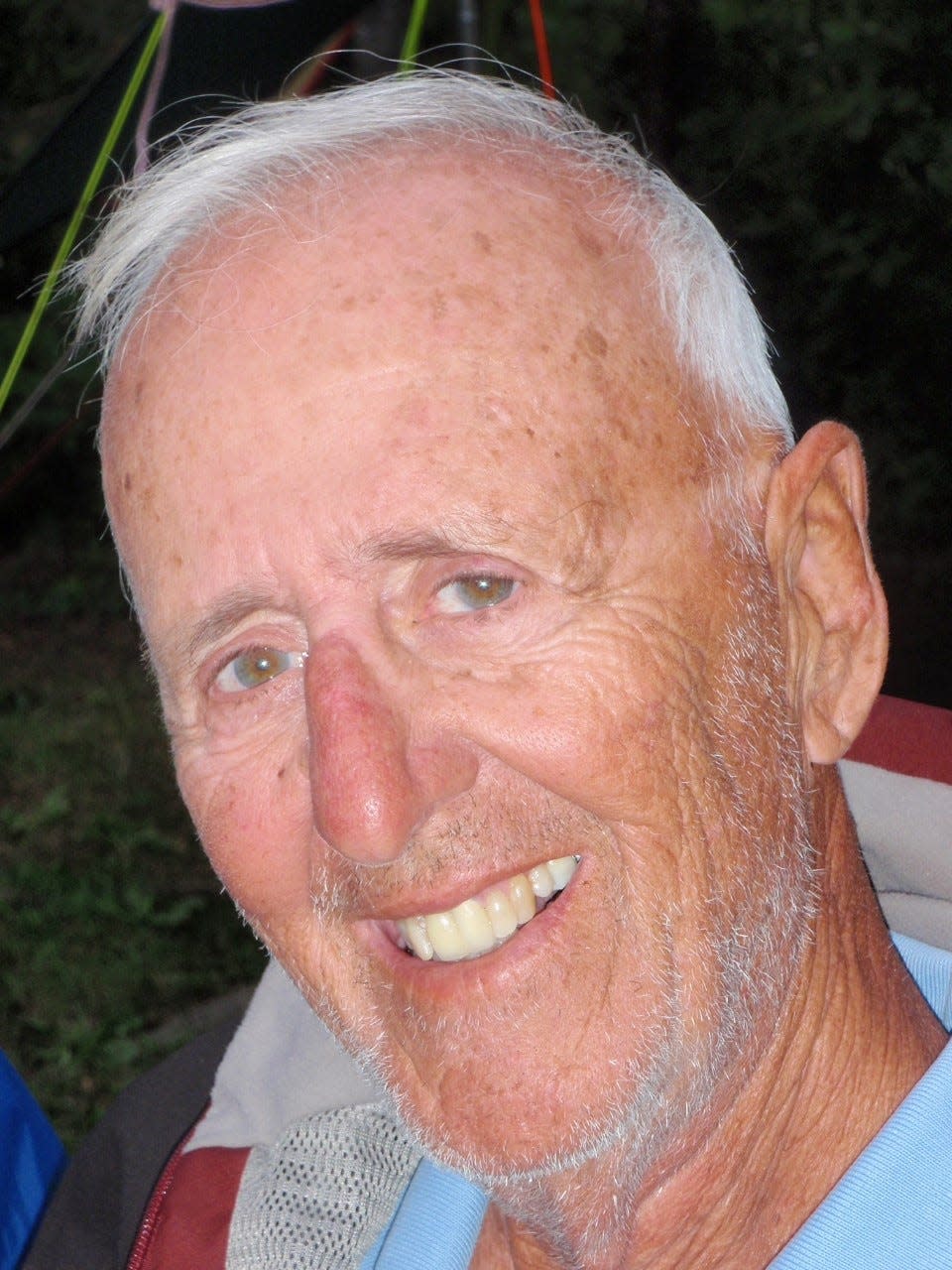Winter Haven doctor, a pioneer of emergency medical services in 1960s, dies at age 98

If you ever need to call 911, you will take for granted that the first responders who arrive will have sufficient training and skills to cope with virtually any medical emergency
That wasn’t the case in much of the country well into the 1960s, when Dr. Eugene Nagel helped develop the modern emergency medical system. Nagel fostered key elements in the training, staffing and equipping of emergency crews while working in Miami, earning him a place on what his son calls “the Mount Rushmore of emergency medicine."
Nagel died Tuesday at age 98 in Winter Haven, where he had lived since 1980. The anesthesiologist spent the final years of his career working at Winter Haven Hospital.
Nagel is listed among 11 “EMS Innovators” on the website of the National EMS Museum, along with Dr. Peter Safar, credited with developing cardiopulmonary resuscitation, and Dr. William Kouwenhoven, who developed the closed chest defibrillator.
Nagel grew up in Missouri during the Great Depression and served in the U.S. Army Signal Corps in Europe during World War II, said his son, Dennis Nagel, a lawyer based in Virginia. Nagel used the GI Bill to obtain an electrical engineering degree from Cornell University, but he decided on a career change and entered medical school in his 30s, earning a degree from Washington University in St. Louis.
While completing a residency in anesthesia at Columbia-Presbyterian Hospital in New York, Nagel learned about the development of CPR, his family said in information provided to The Ledger.
What about the homeless?Amid a sea of ideas for Lakeland's Munn Park, a burning question
Beating on videoPolk BLM calls for arrest of 4 Lakeland officers, removal of new police chief
Small Lakeland officeNewly created state appellate court begins operations inside cramped quarters
Listening to firefighters
In the early 1960s, Nagel held an academic position at the University of Miami and worked as an instructor in anesthesiology at Jackson Memorial Hospital. He became the medical director for the Miami Fire Department’s Rescue Division, a position he held from 1963 to 1974.
Attending the 1964 meeting of the International Rescue and First Aid Association, Nagel met rescue officers who told him that patients were still dying despite receiving CPR, according to the National EMS Museum.

Nagel also had a personal impetus for delving into emergency medicine. At home in his Miami Beach condominium, he received a call from the resident manager, who said another resident was having a heart attack. Nagel provided assistance until a rescue squad arrived, only to hear a worker say that most cardiac patients died soon after reaching a hospital, if not before.
“Dr. Nagel was disheartened by the statement that patients were going to die regardless of the rescue squad efforts,” Dennis Nagel wrote in a narrative of his father’s life. “Determined to make a difference, Dr. Nagel went to the fire station to discuss the possibility of teaching the firefighters some basic treatment skills. The firefighters were receptive to the offer.”
Nagel taught CPR to firefighters but realized that additional care could help improve survival rates, his son said. At the time, a few large cities were experimenting with sending doctors on emergency cardiac calls, but Nagel thought a better approach would provide a wider range of treatment and not require doctors.
Nagel sought to have firefighters trained to provide certain medical procedures. Miami’s fire chief resisted, and Nagel wound up training the firefighters at nights and on weekends as a volunteer teacher, his son said.
In another innovation, Nagel collaborated with a cardiologist to help adapt radio voice telemetry to connect emergency crews with doctors at hospitals. The system allowed responders to send the results of an electrocardiogram to the hospital, providing crucial information to doctors.
The duo put together the first telemetry package in a milk crate, according to the National EMS Museum.
“We had to connect the firemen in the field with the hospital, so they could talk back and forth about the patient without having to wait for the patient to be transported,” Nagel told Polk State College students in 2014, according to an account from the school’s communications department. “Once we did that, we could start saving lives.”
He is often credited with inventing the term “paramedic” for the newly trained fire crews.
Getting past the skepticism
Nagel had to overcome skepticism from Miami officials that the firefighters were sufficiently trained to handle medical emergencies. He showed his trust by allowing firefighters to insert IV lines into his arm, first before the city manager and then the City Commission, to gain permission, his son said.

Nagel trained firefighters to use defibrillators, start IVs, intubate patients and administer drugs. Six firefighters trained on dummies and then cadavers before Nagel allowed them to practice inserting intubation tubes into him, Dennis Nagle said.
Miami developed the first paramedic program in the United States, with Nagel and a cardiologist alternating on 24-hour shifts, carrying the radio that connected paramedics to a medical professional, his son said. The original telemetry units weighed 35 pounds, Nagel told students at Polk State College during a visit in 2014.
A Miami crew successfully resuscitated its first patient after ventricular fibrillation arrest in 1969, according to the family’s information. The Miami Fire Department sometimes arranged later meetings between paramedics and the patients they’d rescued, Nagel told the Polk State students.
Nagel helped form the Medical Committee of the International Association of Fire Chiefs in the late 1960s, his National EMS Museum biography says. He also served on one of the first federal committees offering community grants for EMS systems.
Taking his advocacy to Washington, D.C., Nagel successfully lobbied for Congress to override President Richard Nixon’s 1973 veto of the EMS Systems Act, and he pushed lawmakers to fund the creation of the 911 system and nationwide EMS systems.
Apart from his medical work, Nagel also participated in research on the ability of dolphins to communicate with humans during his time in Miami, his son said.
“Really, the role in emergency medicine, the role in the dolphin research project, was more a result of infinite curiosity,” Dennis Nagel said. “If something interested him, he would devote tremendous time to it. He probably traveled to, I would estimate, close to 50 countries during his lifetime. He became a runner and ran 12 marathons. He just had boundless energy.”
Nagel, a father of three, left Miami in 1974 for a job at the University of California Los Angeles. During his time there, he served as a technical consultant for the TV program “Emergency!” in the 1970s, forming a lasting friendship with one of the show’s actors, Randolph Mantooth, who became an advocate for emergency medicine, Dennis Nagel said.
“That was the biggest boost for emergency care and EMS,” Nagel said of the TV show during his 2014 lecture at Polk State. “Suddenly cities across the country wanted paramedics. It created an appetite for EMS in this country like nothing else.”
In 1976, Nagel became chief of anesthesia at Johns Hopkins University in Baltimore. While there, he was a fire surgeon with Baltimore County Fire Department.
By that point, some longtime friends had formed an anesthesia practice in Winter Haven, and they invited Nagel to join them when he retired from academic life. He did just that in 1980.
His later years
Nagel worked with Winter Haven Hospital from 1980 until 1992, according to BayCare Health System, which now operates the hospital. Nagel also had academic roles with the University of Florida and the University of South Florida, his son said.
Health officials in Israel invited Nagel to help establish an emergency medical program, and he served on a medical board in the country for many years, his son said. Nagel was a frequent contributor to EMS Magazine and served on its editorial advisory board for years, according to his museum biography.
Nagel made a skydiving jump to celebrate his 72nd birthday and continued snow skiing into his 80s, his son said. An avid golfer, he boasted of having twice recorded a hole-in-one. He remained active until the final two years of his life, his family said.
Lynn Mulder, a charge nurse who has worked at Winter Haven Hospital for 37 years, is among the employees who recall Nagel.
“So many good things come to mind in remembering Dr. Nagel,” Mulder said, in a statement provided by BayCare. “Not only was he a good physician, he was a good human being and had a sense of humor. He was a leader in improving medical care for all of us. He has indeed left this world a better place by being in it!”
Nagel is survived by his wife of 60 years, Joan Nagel; his three grown children, Linda, Dennis and Susan; and six grandchildren. The family does not plan to hold a public service, Dennis Nagel said.
Gary White can be reached at gary.white@theledger.com or 863-802-7518. Follow on Twitter @garywhite13.
This article originally appeared on The Ledger: Winter Haven doctor, pioneer of emergency medical services, dies at 98

